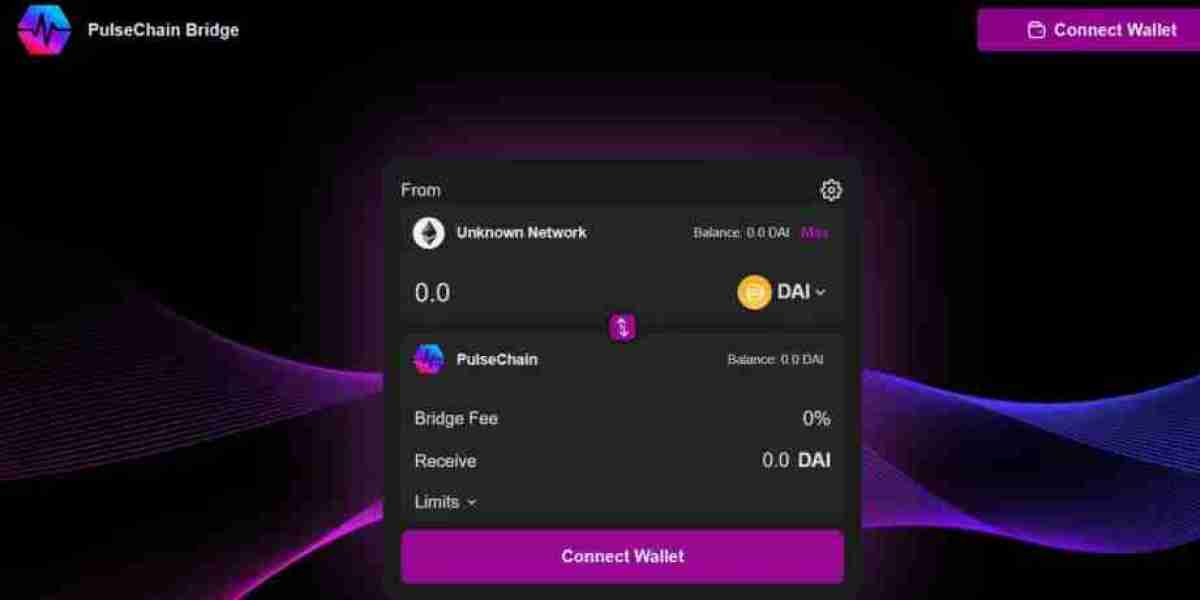In the rapidly evolving world of blockchain technology, interoperability remains a critical challenge. With numerous blockchains operating independently, there is a growing need for mechanisms that allow seamless interaction between these disparate networks. PulseChain Bridge emerges as a groundbreaking solution to this challenge, enabling efficient and secure transfers between PulseChain and other blockchains.
What is PulseChain?
PulseChain is a new blockchain network designed to offer a high-speed, low-cost alternative to Ethereum. It was created by Richard Heart as a fork of Ethereum, aimed at improving scalability, reducing transaction costs, and increasing throughput. Pulse Chains consensus mechanism, a Proof of Stake (PoS) system, is energy-efficient and environmentally friendly compared to Ethereum's earlier Proof of Work (PoW) mechanism.
Understanding Blockchain Bridges
Blockchain bridges are protocols that allow different blockchain networks to communicate with each other. These bridges facilitate the transfer of assets, data, and information between blockchains, thus enhancing interoperability and enabling users to leverage the strengths of multiple networks simultaneously. They address one of the fundamental limitations of blockchain technology—its siloed nature—by creating pathways for cross-chain interactions.
PulseChain Bridge: Key Features
- High-Speed Transactions
PulseChain Bridge offers fast transaction speeds, capitalizing on Pulse Chains efficient consensus mechanism. This makes it possible for users to transfer assets quickly between PulseChain and other networks, minimizing delays that are often associated with cross-chain transactions.
- Low Transaction Fees
One of Pulse Chains primary objectives is to reduce transaction costs significantly. The PulseChain Bridge maintains this ethos, offering low fees for cross-chain transfers. This is particularly advantageous for users who engage in frequent transactions or move large volumes of assets.
- Enhanced Security
Security is paramount in blockchain technology, and PulseChain Bridge incorporates robust security measures to protect users' assets. It utilizes advanced cryptographic techniques and decentralized validation processes to ensure the integrity and security of cross-chain transfers.
- User-Friendly Interface
The PulseChain Bridge is designed with a user-friendly interface, making it accessible to both novice and experienced users. The intuitive design simplifies the process of connecting wallets, initiating transfers, and monitoring transactions, thereby enhancing the overall user experience.
How Does PulseChain Bridge Work?
The PulseChain Bridge operates through a series of smart contracts that facilitate the locking and minting of assets. Here's a simplified overview of the process:
- Asset Locking: When a user initiates a transfer from one blockchain to PulseChain, the asset is locked in a smart contract on the original blockchain.
- Asset Minting: Correspondingly, an equivalent amount of the asset is minted on PulseChain. This newly minted asset is a representation of the original asset and can be used within the PulseChain ecosystem.
- Redemption: When the user wants to transfer the asset back to the original blockchain, the minted asset on PulseChain is burned, and the equivalent amount is unlocked on the original blockchain.
Benefits of PulseChain Bridge
- Cross-Chain DeFi Opportunities
The PulseChain Bridge opens up new opportunities in decentralized finance (DeFi) by enabling users to access and leverage DeFi protocols across different blockchains. This enhances liquidity and allows users to optimize their DeFi strategies.
- Asset Diversification
Users can diversify their portfolios by moving assets across different blockchains. This flexibility allows for better risk management and the ability to take advantage of opportunities on multiple networks.
- Ecosystem Expansion
By facilitating cross-chain interactions, the PulseChain Bridge contributes to the growth and expansion of the PulseChain ecosystem. It attracts users and developers from other blockchain communities, fostering innovation and collaboration.
Future Prospects
The PulseChain Bridge is poised to play a pivotal role in the future of blockchain interoperability. As more blockchains emerge and the demand for seamless cross-chain interactions grows, the importance of reliable and efficient bridges will only increase. PulseChain Bridge, with its high-speed, low-cost, and secure transfers, is well-positioned to lead this transformation.
The PulseChain Bridge represents a significant advancement in blockchain interoperability. By enabling seamless and secure cross-chain transfers, it enhances the utility and accessibility of blockchain technology. As the PulseChain ecosystem continues to evolve, the bridge will undoubtedly play a crucial role in unlocking new possibilities and driving the adoption of decentralized technologies.
In a world where the blockchain landscape is becoming increasingly interconnected, PulseChain Bridge stands out as a beacon of innovation, paving the way for a more integrated and efficient digital economy.



